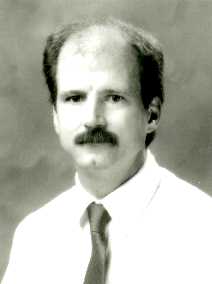Energy Demands and Event Specific Exercise Training
By Jack Ransone, Ph.D., Associate Professor of Human Performance
Oklahoma State University
USATF Coaching Education Level II and Level III Instructor
 In athletics today, some coaches succeed and some fail. What determines success and failure is dependent
on many variables and, in the words of one famous coach, "a little luck." This article will examine the
relationship between energy production and exercise demands.
In athletics today, some coaches succeed and some fail. What determines success and failure is dependent
on many variables and, in the words of one famous coach, "a little luck." This article will examine the
relationship between energy production and exercise demands.
The three metabolic pathways by which the body can produce ATP include: the anaerobic (ATP-CP)
energy system, the anaerobic lactate (glycolytic) energy system, and the aerobic energy system. In order to get
specfic adaptations from each of the energy systems, the coach must scientifically design workouts to challenge
them. Anaerobic capacity is limited by the production of lactic acid and the system's ability to tolerate or buffer
these acids. Anaerobic training involves high intensity work, such as speed work, stressing the lactate system.
Aerobic training is associated with the capacity to deliver oxygen and the ability to utilize oxygen. In that vain,
aerobic training involves both intensity and duration, depending on whether the emphasis is on power or endurance.
The aerobic energy system is stressed by having athletes engage in continuous, extensive, and intensive tempo runs.
In particular, speed endurance and special endurance workouts stress the lactate system in different ways. To summarize,
if a coach has a general understanding of the energy systems, they can more effectively design workouts that meet
the specific energy demands for the events that their athletes compete in.
In either the aerobic or anaerobic energy production, the predominant muscle fiber type is highly
determinant of inherent capacity for energy production. In track and field, various activities recruit different
muscle groups. The physiological specificity of these events is of utmost importance to training methodology. Furthermore,
performance time determines whether an event is primarily aerobic or anaerobic. For example, the physiological
demands of the 800 meter runner are radically different from those of a 5000 meter runner.
A runner's ability to perform work is not the only function of his/her aerobic capacity (VO2),
but demands an efficient anaerobic energy metabolism. The demands for running derive from aerobic and anaerobic
sources. The relative contribution of each to the total energy production depends on the demand of the actual event.
To successfully design a workout does not only require a knowledge of the energy systems, but how these systems
can be integrated together to form a full training cycle or session. One technique involves the integration of
the energy systems and the energy continuum. The chart below illustrates how the relative contributions of aerobic
and anaerobic energy sources contribute to energy production during various durations of maximal exercise.
| |
ATP-CP
|
Lactic Acid Systems
|
|
|
Oxygen Systems
|
| % Aerobic |
0 |
10 |
20 |
30 |
40 |
50 |
60 |
70 |
80 |
90 |
100 |
| % Anaerobic |
100 |
90 |
80 |
70 |
60 |
50 |
40 |
30 |
20 |
10 |
|
How does the energy continuum help in workout design? Following the philosophy of Dr. Joe I.
Vigil of Alamosa, Colorado, elite distance running lecturer and coach, the relationship between the demand for
energy for each given event relates directly to the annual training program design. For example, an 800 meter running
event requires approximately 30% aerobic and 70% anaerobic. The annual training load should encompass 30% aerobic
and 70% anaerobic. This doesn't mean that these percentages should be incorporated in every daily training workout.
The early general preparation, possibly consisting of one 8 week period, may actually incorporate 90% aerobic and
10% anaerobic workouts. The final peaking period may actually be made of 20% aerobic and 80% anaerobic. Again,
Dr. Vigil's theory relates to annual training plan. If your 800 meter athlete runs 1500 miles a year, than 450
miles (30%) should be done aerobic and 1050 miles (70%) run anaerobic.
How would you train a 5000 meter runner? Almost the exact opposite percentages in demand being
70% aerobic and 30% anaerobic. If your athlete's annual training load is 2000 miles, then 1400 miles would be performed
aerobically and 600 miles done anaerobically. If this sounds all too simple, that's actually what it is-- very
simple. The art of coaching is when to increase or decrease these ratios within a given cycle and knowing how to
monitor the athletes for signs of overtraining or injury.
 In athletics today, some coaches succeed and some fail. What determines success and failure is dependent
on many variables and, in the words of one famous coach, "a little luck." This article will examine the
relationship between energy production and exercise demands.
In athletics today, some coaches succeed and some fail. What determines success and failure is dependent
on many variables and, in the words of one famous coach, "a little luck." This article will examine the
relationship between energy production and exercise demands.